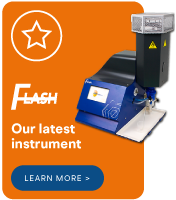Flame Photometer Hazards
- The BWB Team
- Mar 23, 2023
- 5 min read
Keeping co-workers and yourself safe
Any piece of laboratory equipment can pose a hazard. Over time casual attitudes have resulted in the creation of some pithy tongue-in-cheek “Laboratory Rules & Observations”, such as:
You cannot detect an odourless gas by its smell;
Hot Glass looks exactly the same as cold glass;
Never lick the spoon;
Assume all unmarked beakers contain toxic, fast-acting poison;
Always work with a partner so you have someone else to blame;
Forget “Lab Safety”! I want Super Powers…
…and so on.
What are the Hazards of Flame Photometers?
Fire
The most obvious clue about Flame Photometers is in the name. Flames generate heat and pose burn and ignition hazards. The hottest exposed part of the flame photometer will always be the chimney and its exhaust gases.
You should never reach over an operating flame photometer. For their own safety, you should always make fellow workers aware that the unit is in operation, either through direct communication or signage. Irrespective of your justification or reasoning, never leave the machine unattended when the flame is lit.
Long hair should be constrained in a hair net or other approved way. Similarly, loose clothing should be avoided, and a lab-coat is probably the safest clothing choice at all times, since even the poorest quality are at least marginally flame resistant.
Flammable liquids, especially volatiles, should be kept clear of the work area. Those volatiles should preferably be stored in a fume cabinet to prevent ignition of their off-gassing products.
Before igniting and operating a flame photometer, all gas fittings should be checked for tightness. This should be done at the beginning of each session.
The very best units, such as the BWB XP Flame Photometer or the BWB Flash Photometer Range Flame Photometer, come equipped with a flame/spark arrestor on the chimney. Nevertheless, you must still maintain a safe distance beneath anything flammable.
A space of at least half a metre is advised, but do not operate a flame photometer beneath any cabinets. Chocolate bars will melt; chemicals will be denatured; the contents and cabinetry themselves will age prematurely, even if they are above the half metre level. Long exposure, even to low heat levels, will accumulate in closed cabinets.
Pollution
Another of the potential hazards arising from flame photometry comes from the old adage “You breathe what you test”. That is why it is important to operate a flame photometer in an appropriate space where any combustion products cannot accumulate. Seek advice from a ventilation specialist. Multiple units installed in a lab always require operation under a ventilation hood.
This is so that any toxic or poisonous substances in your samples are carried safely away, and do not spread, permeate, or concentrate within the lab itself posing a health risk. Consideration should be given to whether the samples tested will have any hazardous or toxic material in them and whether a capture technology would be appropriate for the chimney gases.
Used samples should be disposed of in properly marked (frequently emptied) containers. Testing materials can often be biohazards.
Additionally, when you draw Standard Samples for calibration, do not return any leftovers to the original containers. That is a different kind of pollution, but can have consequences that can affect your lab’s accuracy (and reputation) for months or years. Once drawn, they are considered contaminated and may not be re-stored.
Electricity
General housekeeping is important and this low-risk difficulty shouldn’t arise if you’re a tidy worker. Nevertheless, it is important to mention that flame photometers are connected to the mains, and there are electrical risks. Typically you use Doubly Distilled (DD) water (or Type I, Milli-Q, or Ultrapure water), and that is an electrical insulator. Once you introduce ions of any sort, however, water becomes a conductor.
Equally important, the covers on the device should never be removed by operators. This task is left to experienced service personnel following specific maintenance procedures.
It is also prudent to mention that fuel gases for the device, evolved gases, and many volatile vapours can be ignited by a spark. This leads to…
Explosion
Personal Protective Equipment (PPE) for this work includes gloves, safety glasses, and whatever measures are dictated by your company policies or local regulations. Never remove your safety glasses while working with the machine.
Gases generated within the equipment may be low risk, but leaking fuel such as butane, propane, or natural gas can pose a Medium level of risk. Fittings should be connected, and then checked for integrity with mild detergent and water solution that will produce bubbles if a leak is present.
Alternatively you can use a commercial sprayable leak detection solution, or a digital gas sniffer. Hopefully we don’t need to say this, but: Never attempt to check for gas leakage with an open flame!
Depending on regulations for your region, you may be legally required to disconnect fuel sources and store them in a different, secure, and locked location when the machine is shut down. This is almost certainly true in every locale for fresh, full, unconnected fuel cylinders. Those must be stored away from flames and operating equipment, usually outdoors with lots of ventilation in the event of a leak. Know your local regulations because Federal or Board-empowered inspectors can be relentless and strict.
Even after beginning operations, if a fellow lab worker reports smelling gas, the unit should be shut down and the gas supply turned off. The area should be well-ventilated, and, once it is clear, the fittings should be re-inspected with care.
Gas supply hoses provided with the unit are up to U.K. standards. If using any alternative, assure that it is up to your local/national standards. Snap-on connectors are generally less reliable than screw-on connectors so keep that in mind and follow the appropriate guidelines.
Physical Strains and Injury
Our units typically mass in the range of 11 kilograms (~25 lbs.) and should be lifted with care, keeping the back straight and using the legs muscles to do most of the work. If this is too much for you to lift alone, obtain assistance. For a similar reason, small propane or other fuel tanks are recommended to make replacement easier and safer.
Finished for the Day
When the work is complete for the day, before you shut off the flame, DD water or its equivalent should be run through the machine for 10-15 minutes. This clears and cleans the mixing chamber and the nebuliser itself making sure it is ready and uncontaminated for its next use.
The Takeaway
Even the high safety standards built into each BWB flame photometer can only protect people so much. For example, if the flame is extinguished, the machine can go into a safe mode to prevent damage or injury. It does not attempt to re-light itself unless the operator intervenes. No one should operate these devices without proper training and supervision until competency is well-established.
Please feel free to contact us if you have any questions about our equipment. We’d love to hear from you!



